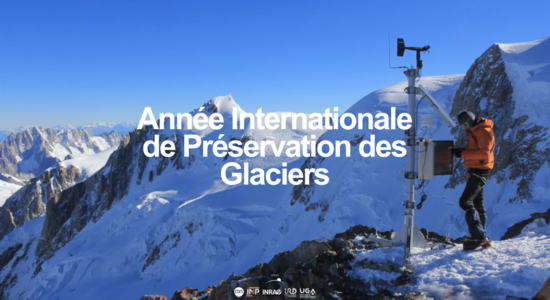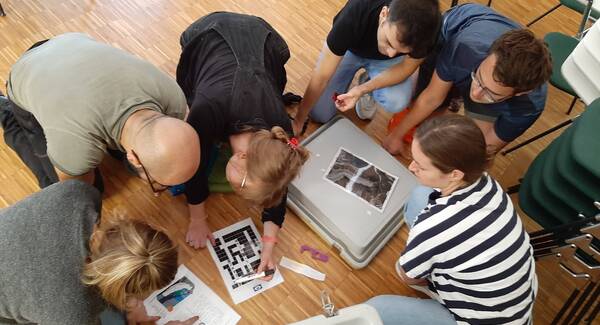Snow processes in the mountainous regions
Publié par Institut des Géosciences de l'Environnement IGE, le 1 juillet 2021 2.4k
1. Mountains are as important as anything else
The mountain ecosystem plays an important role in regulating the downstream ecosystems in terms of water availability and nutrient dynamics. They also meets the economic demands through hydropower generation, agricultural production and fresh water replenishment. Being so intriguing in nature, at the same time they are more vulnerable to the climate change. Despite of such an important role in water cycle the mountain hydrology and the impact of climate change on it do not attracted the deliberated concern. The climate change could cause the shift in the different fluxes of water cycle (Figure 2). The snow plays an important role in mountain ecosystem in term of storing the water during the winter and then replenishing the ecosystem in the late summer. However, temporal and spatial variation of snowmelt and its role in regulating the surface and subsurface flow is of limited investigation.

2. Surface and subsurface as an integrated system
In mountains, the surface and subsurface both plays the equal role in governing the overall water cycle dynamics. The surface variability is much more dependent on the slope, incoming solar radiation, mountain shadow, wind, vegetation, land cover, snow and evapotranspiration. Whereas, the subsurface variability is dependent on the porosity, permeability, soil horizon, bedrock depth, soil retention and soil transfers. Both processes operate in integration to control the water transfers to the system and to the streamflow from overland flow.
3. Snow and its heterogeneities
The snow dynamics in the mountains are typically influenced by the surface-subsurface coupled processes. However, till now most the snow models are the surface or shallow surface hydrological model. These model do not account the subsurface heterogeneities and its integrated response to the hydrological processes. Hence, most of the model are inefficient in capturing the patchiness of the snow during the melting period and its impact on streamflow. The subsurface and surface heterogeneities lead to the variable snow accumulation and melting across the temporal and spatial scale.
4. Monitoring and modeling
These integrated process needs a sophisticated observation structure to conclude in terms of the physical processes. Along with observation of the surface meteorology and geography, the subsurface geophysical introspection is equally important to understand the integrated processes. ParFLOW-CLM is an integrated model which simulates the water cycle assuming the surface and subsurface as an integrated system (Figure 3). The distributed nature of the model provide the platform to consider the surface and subsurface heterogeneities in terms of model data forcing. Community Land Model (CLM) is a land surface model integrated to ParFLOW to account for the land-water-energy exchange. CLM is efficient to model the evapotranspiration and snowmelt along with energy exchange at the surface.

5. Distributed and non-distributed forcing
More often in spatial modeling the point station observation is equally distributed to all grids specified within the study area. This constant distribution of parameters is know as the non-distributed forcing. However, in the distributed forcing, the parameter from the point station observation are distributed heterogeneously along all grids based on the surface characteristics.
6. Snowmelt dynamics and comparison
The forcing heterogeneities makes ParFLOW-CLM to simulate the real snow dynamics. The non-distributed forcing results into the sudden drop in snowmelt along the watershed. However, with distributed forcing the snowmelt last for longer period. This longer snowmelt is result of differential melting which leads to the patchiness of snow on the surface. The results of model were compared with the satellite observation (Sentinel-2) to reveal the compatibility of model (Figure 4).

7. Concluding remark
Shorter and longer snowmelt period leads to significant impact on the water cycle and mountain ecosystem. The nutrient deposited on snow are poured into the water cycle along with snowmelt. These snow dependent nutrient dynamics can cause the serious impact on the vegetation cycle of mountain ecosystem. Moreover, the water managers needs to know the snowmelt temporal distribution to comply with their agricultural and energy production. Further, the climate change can impact the snow stay days in mountain regions, which will directly impact all the physical processes in the mountains. Hence, the mountains require a special attention in the era of climate change to mitigate the impact on its ecosystem.
This article was written by Aniket Gupta, a 2nd year PhD at the IGE
References
- Beria, H., Larsen, J. R., Ceperley, N. C., Michelon, A., Vennemann, T., & Schaefli, B. (2018). Understanding snow hydrological processes through the lens of stable water isotopes. Wiley Interdisciplinary Reviews: Water, 5(6), e1311.
- Kuffour, B. N., Engdahl, N. B., Woodward, C. S., Condon, L. E., Kollet, S., & Maxwell, R. M. (2020). Simulating coupled surface–subsurface flows with ParFlow v3. 5.0: capabilities, applications, and ongoing development of an open-source, massively parallel, integrated hydrologic model. Geoscientific Model Development, 13(3), 1373-1397.




